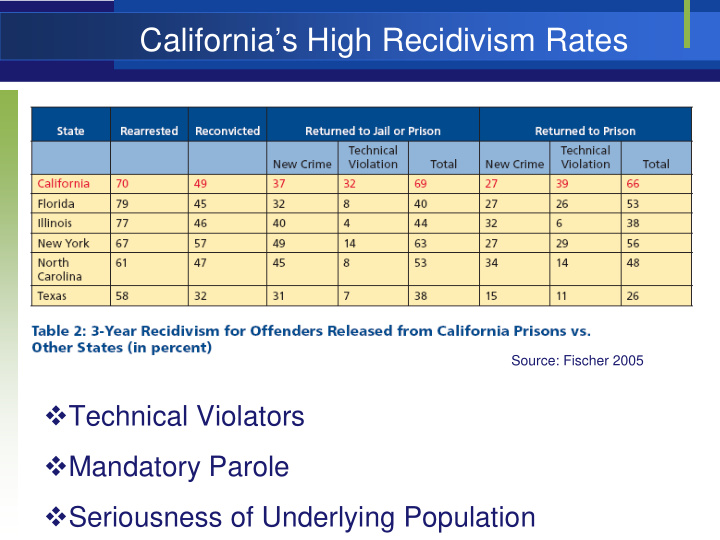



California’s High Recidivism Rates Source: Fischer 2005 � Technical Violators � Mandatory Parole � Seriousness of Underlying Population
Sex Offender Violation and Revocation Pattern Criminal Violations PAL Violations Non-PAL Technical Violations Returned Through Courts Board Returned-Criminal Board Returned-PAL Board Returned-Non-PAL Tech -30% 20% 70% 120% 170% 220%
Second Strikers Violation and Revocation Pattern Criminal Violations PAL Violations Non-PAL Technical Violations Returned Through Courts Board Returned-Criminal Board Returned-PAL Board Returned Non-PAL Tech -30% -10% 10% 30% 50% 70% 90%
Inflow into California Prisons 80000 70000 RTCs WNTs 60000 NFAs 50000 40000 30000 20000 10000 0 R 1 3 5 7 9 1 3 5 7 9 1 3 5 A 8 8 8 8 8 9 9 9 9 9 0 0 0 9 9 9 9 9 9 9 9 9 9 0 0 0 E 1 1 1 1 1 1 1 1 1 1 2 2 2 Y
Parolees Make a Large Portion of Inflow of Persons into Prison Source: Pfaff 2009
Many Serious Offenses go through the Board Offense Courts Board Homicide 129 78 Robbery 606 524 Assault and Battery 1,259 5,255 Sex Offenses 316 1,676 Burglary 1,439 851 Theft/Forgery 3,522 3,016 Drug Possession 6,536 6,671 Drug Sales/Manufacturing/Trafficking 741 1,826
“Robin Reagan” Rules Examples: � Sale, transportation or distribution of any narcotic or other controlled substances as defined in division 10 of the California Health and Safety Code. � A parolee whose whereabouts are unknown and has been unavailable for contact for thirty days. � Any other conduct or pattern of conduct in violation of the conditions of parole deemed sufficiently serious by the P&CSD staff, including repetitive parole violations and escalating criminal conduct. � The failure to provide two blood specimens, a saliva sample, right thumb print impressions, and full palm print impressions of each hand the DNA Database. � The failure to register as a Sex Offender. Violation of the residency restrictions set forth in Penal Code section 3003.5 for parolees required to register as provided in Penal Code section 290. � Violation of the special condition prohibiting any association with any member of a prison gang or the wearing or displaying of any gang colors, signs, symbols, or paraphernalia associated with gang activity, if such condition was imposed. � Conduct indicating that the parolee's mental condition has deteriorated such that the parolee is likely to engage in future criminal behavior. Source: 15 CCR 2616
Recommend
More recommend